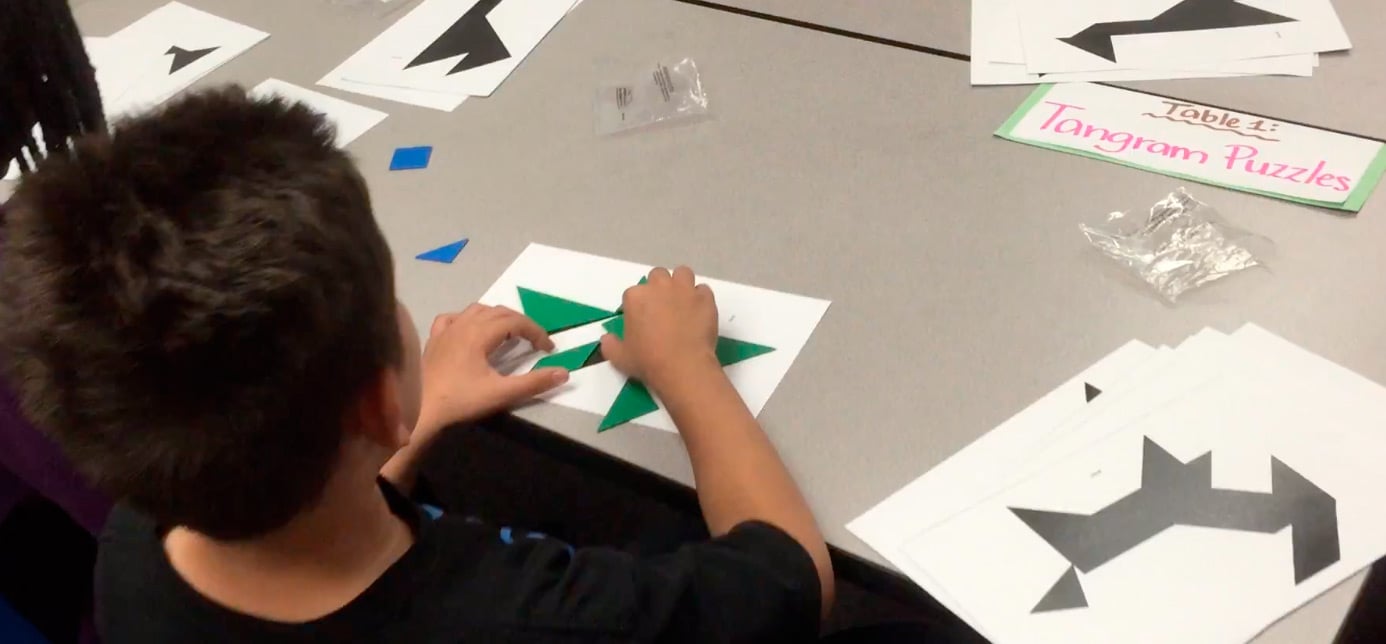Tangrams
Students manipulate the seven geometric shapes of a tangram puzzle to form larger, composite shapes.
 A student working on a tangrams puzzle.
A student working on a tangrams puzzle.
Procedure
Day 1
- Review the names of geometric shapes. Explain that when we put shapes together, they can create bigger shapes (composite shapes).
- Show a tangram puzzle card that has interior lines outlining the seven shapes. Describe the card as a picture puzzle that you solve by rearranging and fitting together the tangram pieces to create the bigger shape or figure on the card. Model how to fill in the card with the pieces.
- Remind students that:
- they need to use all 7 of the pieces.
- the pieces cannot overlap.
- they may need to flip the parallelogram/rhomboid.
- Put students in pairs (or small groups), and give each pair a complete tangram puzzle set and 1 or 2 puzzle cards with interior outlines.
- After students have had a few minutes to work on their puzzles, rotate cards between pairs. Go through as many cards as time allows.
Day 2
Now that your students have had a chance to manipulate the shapes to assemble tangram puzzles with the help of interior outlines, they can move on to the silhouette-only cards.
- Model how to fill in a puzzle card that has only the silhouette of the composite shape.
- Repeat the procedure for partner work using some of the easier silhouette-only cards.
- Look for students having difficulty filling in the shape without any interior outlines.
Day 4
- Repeat the procedure for partner work, this time distributing some of the more challenging silhouette-only cards.
- Model how to design your own tangram puzzle and create a puzzle card.
- Have each student create their own puzzle card for other classmates to complete.
Note: Students can choose to include the interior outlines or leave them out.
Day 5
- Have students trade the puzzle cards they created, and put together each other’s tangram creations. Let them try to complete everyone’s in the class if possible.
Extension activities, tips, common errors and challenges, information about standards addressed, and additional resources are all available in the downloadable PDF version of this activity.
Spatial Thinking
Concepts
Object Manipulation
Computational
Thinking Concepts
Decomposition
Debugging
Mathematical
Concepts
Geometric Shapes
Composite Shapes
Symmetry — reflective, rotational, point
 A student working on a tangrams puzzle.
A student working on a tangrams puzzle.